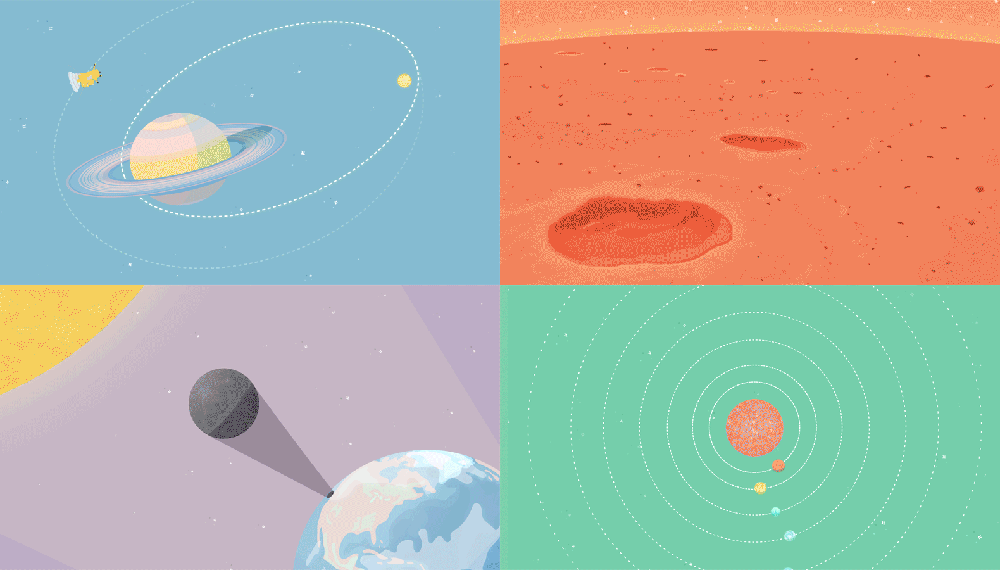NASA Celebrates Pi Day with Space Math Challenge

NASA's Jet Propulsion Laboratory (JPL) is celebrating Pi Day (March 14) with a set of four math problems — featuring Martian craters, distant exoplanets, Saturn orbits and eclipses — to be understood with the number pi.
The mathematical constant pi — the ratio of a circle's circumference to its diameter — comes out to 3.14159… and so on. As such, the crucial constant is celebrated on March 14, or 3/14. For the fourth year in a row, NASA set up a series of math problems using pi to demonstrate the mathematical constant's importance to calculations to engineering and understanding space.
The problems, aimed at the sixth grade through high school level ("but fun for all," NASA officials wrote), ask students to evaluate a Martian impact crater; a total solar eclipse, like the one that will cross America on Aug. 21; the final orbits and "grand finale dive" of the Saturn orbiter Cassini; and the newly discovered planets around the star TRAPPIST-1.
NASA also highlighted the ways pi is important in the everyday work of NASA researchers.
"In my career, pi has allowed me to calculate the size of a shield needed to enter the atmosphere of Venus and the size of a parachute that could safely land the Curiosity rover on the surface of Mars," said Anita Sengupta, an engineer at JPL. "Most recently, we used pi in our calculations of the expanding atom cloud we will create for an experiment called the Cold Atom Laboratory, which will fly aboard the International Space Station."
So while you feast on pie or see how many digits of the number you can recite (you can share your stories with NASA here) — and look out for potential Pi Day astronaut tweets — take a moment to try a challenge or two and reflect on the number's usefulness.
Email Sarah Lewin at slewin@space.com or follow her @SarahExplains. Follow us @Spacedotcom, Facebook and Google+. Original article on Space.com.
Get the Space.com Newsletter
Breaking space news, the latest updates on rocket launches, skywatching events and more!
Join our Space Forums to keep talking space on the latest missions, night sky and more! And if you have a news tip, correction or comment, let us know at: community@space.com.

Sarah Lewin started writing for Space.com in June of 2015 as a Staff Writer and became Associate Editor in 2019 . Her work has been featured by Scientific American, IEEE Spectrum, Quanta Magazine, Wired, The Scientist, Science Friday and WGBH's Inside NOVA. Sarah has an MA from NYU's Science, Health and Environmental Reporting Program and an AB in mathematics from Brown University. When not writing, reading or thinking about space, Sarah enjoys musical theatre and mathematical papercraft. She is currently Assistant News Editor at Scientific American. You can follow her on Twitter @SarahExplains.











